Like with Quantic Dream's Heavy Rain, Rockstar Games and Team Bondi's LA Noire is more of an experience than a raw videogame. But unlike the former, it actually manages to become a far more involving affair, with a decent script and excellent performances breaking through the many mundane – or simply slower, more realistic if you will – parts of being a rising detective.
The key component in making this happen, is the game's use of a costly, but incredibly advanced way of capturing facial animation. Team Bondi uses a digital scanning solution, called MotionScan, which in effect records the actor's performance and the creates a 3D animated model for use in-game. Of course, there's more to it than that; the model has to be compressed and scaled down in terms of complexity to fit into the memory and processing requirements of both consoles. But the end result is still the same: the most believable facial animation work seen in any videogame to date.
LA Noire was originally a PS3 exclusive release, only switching platforms after Rockstar decided that a multi-platform only future was the way forward. As such, the core game engine has been optimised for the Sony platform, with some effects looking better on the system, though in some cases we actually find the 360 code to be mildly superior in this regard. On the whole Team Boni have delivered an excellent example of solid multi-platform parity, delivering an open-world experience which is accomplished on both formats, but that does favour the PS3.
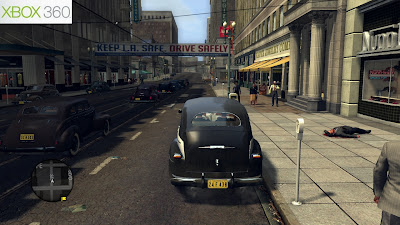
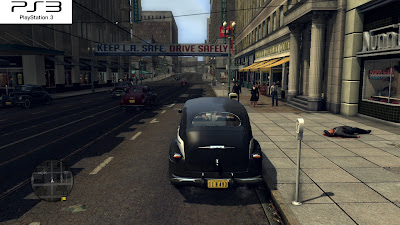
In past Rockstar titles – namely GTA4 and Red Dead Redemption – we found that memory bandwidth, along with vertex shading performance was a key concern in getting the engine up and running on both systems without compromising on the graphical look of the game. While 360 owners received native 720p with 2x multi-sampling anti-aliasing with it's framebuffer, PS3 gamers were treated with a sub-HD resolution and quincunx AA instead. The result was a blurrier overall look with more in the way of aliasing issues and lesser amounts of visible fine detail.
For LA Noire things are very different. Sure enough, on the 360 we find the very same 720p plus 2xMSAA framebuffer we've come to expect, but the difference here is that both versions now operate at 720p with the same amount of edge-smoothing. The level of sharpness and clean edges is now equivalent across the board, with crisp and clear image quality overly apparent, sans for some deliberate blurring due to some purposely placed depth of field effects.
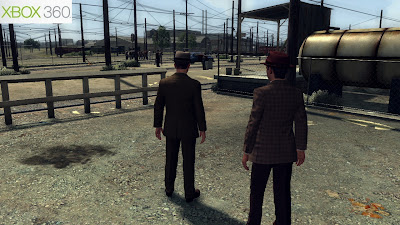
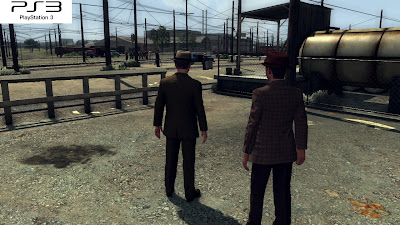
That's not to say there aren't still issues with LA Noire's presentation. Firstly, while some smaller details – such as the larger telegraph wires for example – are thankfully devoid of any shimmering or jaggies, the same cannot be said for thinner wires or small elements of scenery dotted throughout the environment.
Secondly, the game is filled with various shimmering shadows which flicker and clip out of view on many an occasion, meaning that although image quality is fairly decent, it's far from perfect overall. Given the open world nature of the game and the high levels of detail on offer, this of course was only to be expected. And there are times when this level of detail does benefit the presentation – it helps create a believable world in which to immerse the player.
LA Noire's world it littered with little touches just waiting to be noticed; detailed geometry on the fronts of buildings, the intricate nature of the power lines roving across the city of LA, various smoke and particle effects, the heat haze present on a muggy morning sun rise, and not forgetting the interactive plants and foliage. Not everything always looks polished or impressive, but these small touches are very welcome nonetheless.

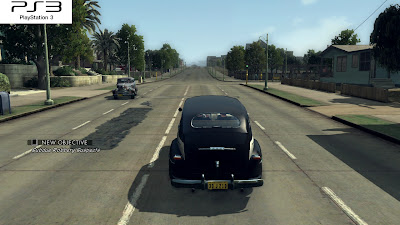
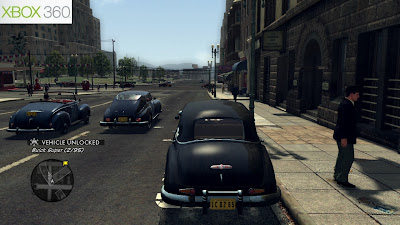
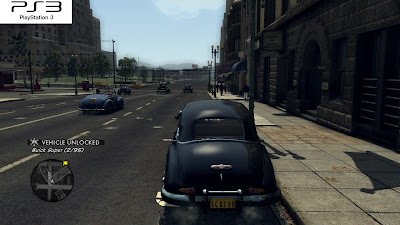
So with that said, it's a pretty accomplished game engine overall, with plenty of detail apparent in both versions. By the looks of things Team Bondi have optimised their engine around the PS3's architecture but without neglecting the 360, thus enabling both versions to look identical from an art standpoint, with only a few technical differences between them.
Occasionally we see what appears to be lower resolution, or less detailed textures on either format at different points. Although, it seems that this is a simple LOD/streaming issues with regards to mip-maps and nothing more. Sometimes we see higher quality assets loading in on the PS3, but not the 360 and vice-versa.
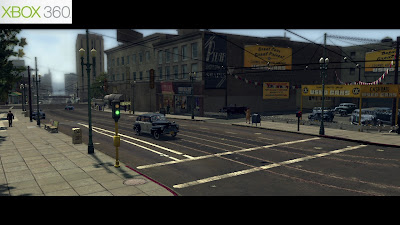
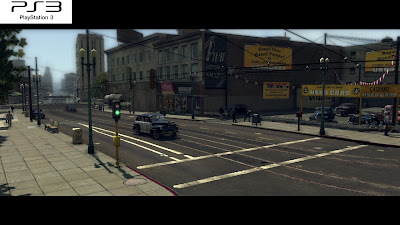
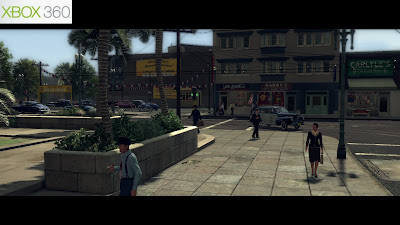
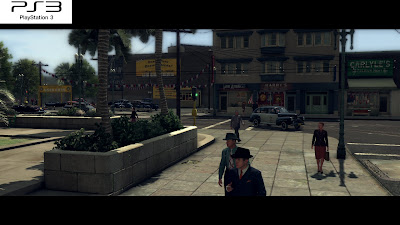
In terms of overall LOD set-up however, the PS3 version commands a small lead over the 360 game. Here we see environmental objects – such as buildings, trees etc – popping in later on the 360, along with texture detail and shadows. By contrast, on the PS3 they usually load in a little quicker, with far away details often being visible from longer distances.
Additionally, the use of a depth of field effect also helps in masking LOD issues on both. In some scenes we see DOF is stronger on the 360, hiding object pop. While in others the two versions appear identical. We also see that some foliage and trees being slightly more detailed on the PS3 too, regardless of LOD.

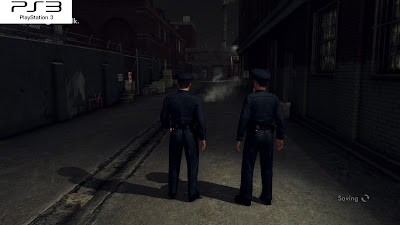
Contrary to some early reports, SSAO (screen-space ambient occlusion) is indeed present in both versions of LA Noire, however the overall impact of the effect throughout is quite different. SSAO adds noticeable depth to scenes in both versions of the game, although the effect is stronger on the PS3. On the 360 the intensity seems to have been reduced, along with the radius of the shadowing produced, thus making it stand out far less than it does on the PS3.
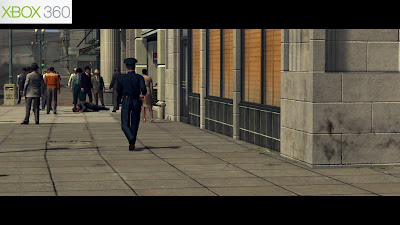

In scenes which appear quite flat and lacking depth, the SSAO in LA Noire generally favours the PS3's implementation – especially on the characters. Elsewhere, and on the environments, it can be far too obvious, appearing less realistic as a result. It's also quite buggy in both versions, prone to a few artefacts in motion. For example the shadowing that SSAO produces often appears as a floating halo around objects, creating an unnatural glow where ambient light occlusion is simulated, in addition to occasionally flickering or popping in and out of view. Both versions suffer from this, but this is more noticeable on the PS3 due to the stronger use of the effect..

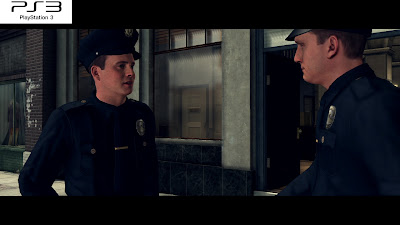
Shadowing on the other hand, looks nicer on the PS3 (although wholly subjective – some may prefer the 360's dithered look). While actual shadow resolution is the same across both formats, constantly changing depending on the distance from the player, they way in which they are filtered is not.
Essentially, we're looking at PCF filtering on both versions respectively. However, edges are plainly filtered on the PS3, thus preserving sharpness at the expense of some jittering. While on the 360 the penumbras are dithered in order to create a smoother appearance. Although, this means edges suffer from an apparent graininess, albeit without less jittering side effects. Ambient shadowing on the characters can also appear a touch grainy at times too.
From a distance the shadows in general do look a tad nicer on the 360, but up close and the opposite is true. Here, you'll find that the graininess of the 360's shadows look more than a touch more unsightly at times.

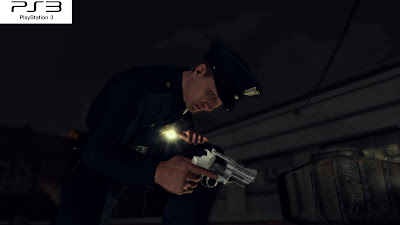
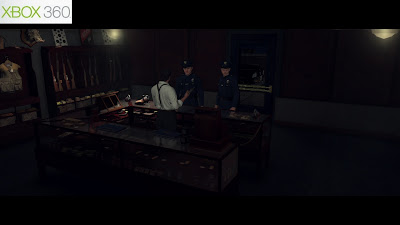
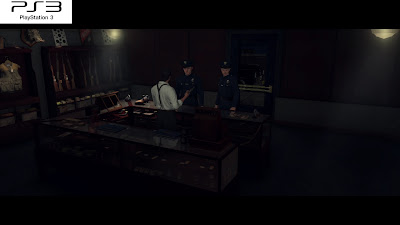
There are a few other differences between both versions of LA Noire, but nothing that you'd be able to notice whilst playing. Lighting for example isn't a complete match in all like-for-like situations.
In some night time scenes it looks like there are some light sources have been positioned a little differently on both versions, though not all the time. Whereas when indoors, the PS3 seems to occasionally benefit from stronger use of lighting. The stronger use of SSAO also creates a darkening affect on lighting in any given scene, which accounts for some - but not all - of the oddities we've been finding.
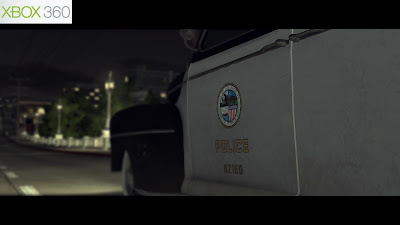
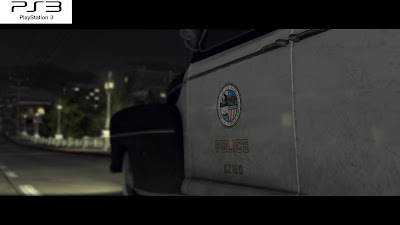
We also find that reflections on some shiny surfaces are sometimes stronger on the PS3 – the intensity of the effect appears to be lower on the 360. As a result it looked like reflections were absent in a few places, when really this wasn't the case at all. Although saying that, none of the above lighting differences are present in every scene, and as such are more technical curiosities than anything else.
On the whole, there's a real sense that LA Noire is very, very close on both platforms and that the differences aren't exactly going to be deal breaker for owners of only one system. Sure enough, some parts of the game's graphical make up can be pretty inconsistent at times. But Team Bondi have created a nice looking title, that while far from perfectly polished, has a lot of soul and character whilst also holding up rather well technically.
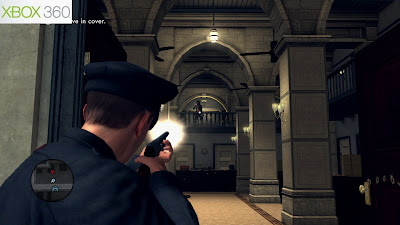

Moving on, and LA Noire targets a 30fps update, with the frame-rate being capped at that level. Compared to previous Rockstar titles, performance is much improved on both consoles, but especially so on the PS3.
There are still some similarities with GTAIV and Red Dead Redemption. Like with those titles the PS3 version is v-synced at all times, while the 360 game isn't. As such we see some subtle screen tearing appearing at the very top of the display, although this goes by virtually unnoticed. Tearing only really occurs during gunfire and hectic scenes, or in scenes whereby gunfire results in some environmental destruction, so isn't an issue at all.
Moving on to frame-rate concerns, and we find that performance is better overall on the PS3 game. Both start out running at the targeted 30fps, and both drop frame-rate heavily in stressful scenes with lots going on. However, for the most part it is the PS3 version which copes better in these situations, dropping less frames and for shorter periods. In some shoot outs – and in the on-foot chase sequence near the beginning of the game – we see smoothness take a dip, with frame-rates in the 20's on the both formats. But the PS3 version in the same scenes operates between four to six frames higher, looking and feeling more fluid as a result.
Of course in similar scenes elsewhere the opposite can also be true on occasion – the 360 game can see higher frame-rates than the PS3, though the differences aren't always as pronounced. Here it seems that environmental factors (crowds, cars, scenery etc) are the main cause behind this. Like with most open-world titles, load strongly dictates the level of performance at any given time. Cut-scenes for example, set in more detailed areas of the game can struggle to reach the desired 30fps, whilst indoors things are far more stable. The same could be said with regards to driving and on-foot sections, where the more pedestrians, cars, and scenery on screen causing frame-rates to fluctuates.
In any case, performance in LA Noire is far more solid on the whole compared to both GTAIV and Red Dead Redemption on both formats – especially on the PS3, whereby Team Bondi's optimisations for the platform result in a smoother overall experience, but without pairing back on any details. The PS3 version features slightly longer draw distances and LODs, but also manages to perform more consistently across the board. Although, as good as that sounds, both versions are equally as playable, and we do often find a pretty consistent 30fps update during play, which is the main thing really.
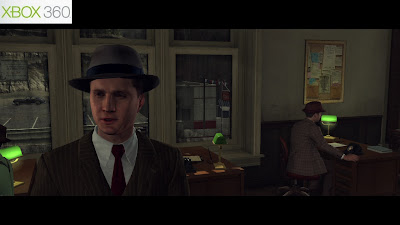
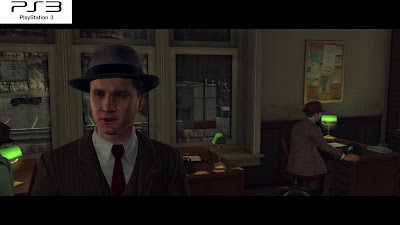
Beyond the close multi-platform conversion between PS3 and 360, the developer's biggest achievement comes with the inclusion of a stunning facial animation system, which provides perhaps the most uncannily realistic, and downright believable looking characters we've ever seen in a videogame.
Actors performances are digitally scanned in 3D, and detailed, animated models are created automatically from this. These then have to be paired back significantly to work within the technical budgetary constraints of the home consoles; geometry complexity is hugely reduced, and in it's place large amounts of multi-layered normal maps are used, in combination with various textures, which are then blended to deliver the final in-game model.
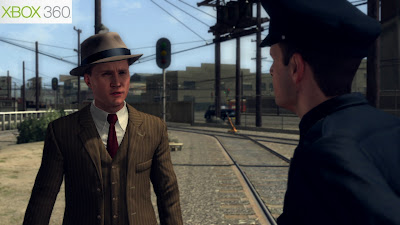

As you can see above, the end results are stunning to behold - intricate muscular movements are carefully handled with ease, subtle changes in wrinkle and skin distortion are present as facial expressions change, eyes and lips move and are perfectly in sync with dialogue. Essentially, the actors original performance is recreated extremely accurately in 3D, and it works very well in bringing about a real sense of immersion to the proceedings.
However, the downside of this technique is that facial movements cannot be tweaked by hand (there's no animation rig to modify), and additional skin texture details and shaders are troublesome to add without breaking the seamless look created by the original scan. As a result there are no advanced shaders present at all – facial models simply consist of various normal maps, textures, a colour map, and a phong specular map – which leaves them looking a touch flat compared to hand crafted creations.
When compared to the limitations of traditional motion capture, the use of digitally, 3D scanned performances outweighs any negatives that go along with the technique. The lack of any additional shaders, or even environmental reflections on the faces hardly takes away from the overall look of the game. Instead, the slightly plain, washed out appearance of the characters fit in perfectly with the hazy 1940's art style the developers are going for. In effect by far the most important element here is the believable performance being captured and displayed correctly, it is central to the core experience.
On the other hand, the rest of the character animation has been motion captured the traditional way, before being touched up by artists for use in the game. As such, we see some odd mismatches and errors with the way in which the facial performance and bodily animations actually blend together. For the most part the two are pretty seamless, but sometimes it can be a little noticeable that there are two different systems at work, especially when the end result isn't quite as perfect across the entire range of animations on the characters.
This is of course very minor in the grand scheme of things, and has no impact on your enjoyment of the game itself, nor does it spoil any of the superb acting and capturing work done throughout. Like with the rest of LA, Noire Team Bondi have done a great job.
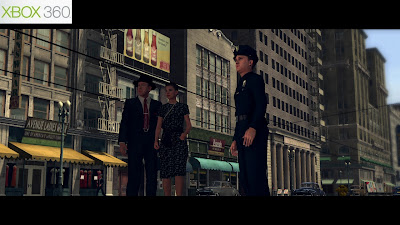
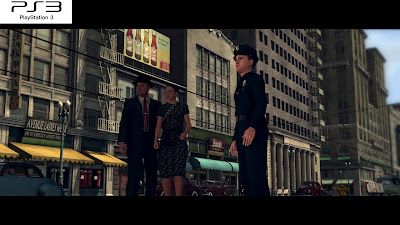
Looking back at past Rockstar releases, and it's pretty obvious that the 360 has been the main focus throughout development, with both Red Dead and GTAIV heavily build around specifics which favour the 360 as a platform - long draw distances, plenty of intricately detailed scenery, and loads of alpha-based effects, all of which are dependant on having huge amounts of memory bandwidth available, along with a hefty amount of vertex shading capability.
Using a custom engine set-up, Team Bondi have delivered a title which does the opposite. It has been carefully optimised around the PS3's strengths and weaknesses, thus not only resulting in far better overall performance, but also a superb multi-platform conversion that is incredibly close on both formats while favouring Sony's system.
There really isn't much in it all. There's a real sense that SSAO is perhaps more balanced and realistic on the 360, but other areas of the game – LOD, shadowing, performance under load - slide tangibly towards the PS3, albeit subtly in most cases. As such, both versions of LA Noire come highly recommended, but for owners of both consoles the PS3 version provides a touch more polished experience overall, and thus is the one to get given the choice.
In the end, LA Noire's long term success will largely depend on how players react to its unique blend of streamlined sandbox-style gameplay, and more tightly controlled/scripted story progression that is paramount to the experience as a whole, just as much as the lavish trimmings of 1940's LA and the key graphical talking points – the actual performances themselves, and their superb recreation in computer rendered form.
Either way you can't deny that Rockstar and Team Bondi have offered up a compelling ride that blends the core elements of film with the interactive parts of a traditional videogame, and does so without any overly self-aware, arty undertones.





















































